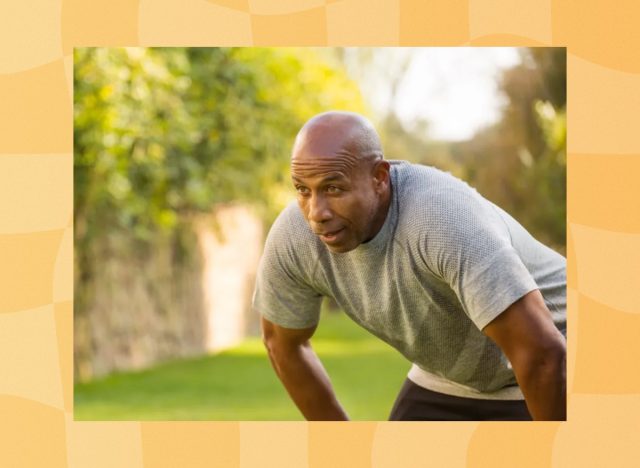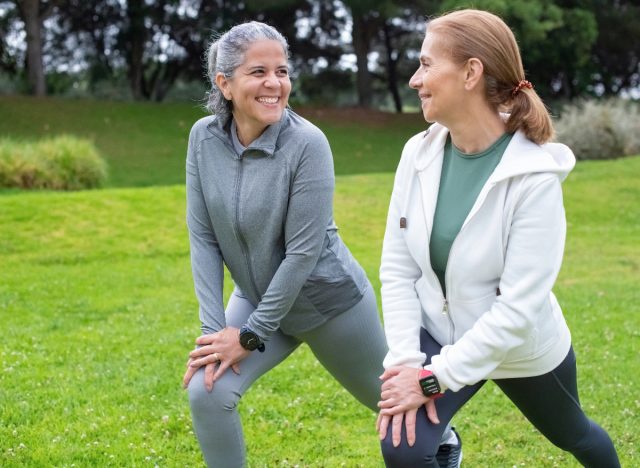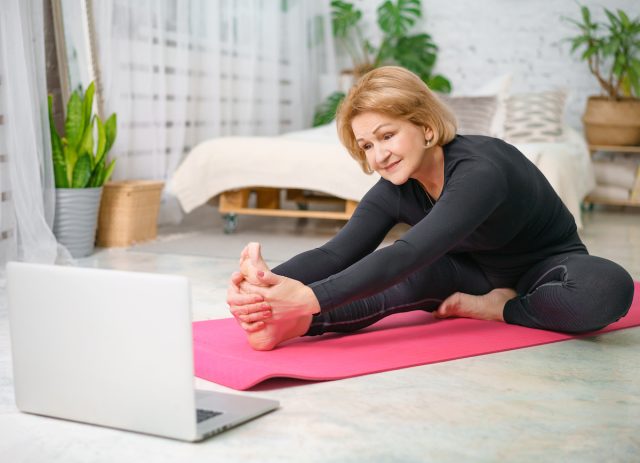9 Flexibility Mistakes That Are Destroying Your Body After 50—and What to Do Instead

Remember when you could easily bend down to tie your shoelaces or reach for that top shelf without thinking twice? As we age, these simple movements can become increasingly challenging. That's why I'm here to help. I'm Dr. Landon Uetz, a Doctor of Physical Therapy at TeachMe.To with 4 years of experience working in hospital-based outpatient orthopedic clinics and specializing in helping pickleball players stay flexible and mobile. In this article, I'll share the most common flexibility mistakes I see in my practice and show you exactly how to fix them to keep your body moving smoothly well into your golden years.
Why Flexibility Matters More After 50

Flexibility/mobility is important for individuals of all ages, but is critical for those after 50. The main reasons I find it is important are to reduce joint pain/stiffness, improve balance and coordination, and improve overall physical function. As we age, it is common to experience tight muscles and stiff joints. Prioritizing mobility work can mitigate these age-related changes that have the potential to lead to chronic pain and irritation. Improved flexibility may help with balance related activities due to ease of reaching and bending, allowing yourself to brace and catch your balance in situations you may not have been able to before. Lastly, mobility and flexibility can be looked at as a reflection of overall general health. By participating in mobility routines, you are likely bolstering your health system as a whole, which will work to your advantage.
Mistake 9: Not Staying Hydrated

Why it's damaging to the body: by not being properly hydrated, your tissues may not adapt to the stressors that we place on them while stretching.
Easy fix: drink the recommended amount of fluids, which may be around half of your body weight in ounces as a general guideline.
Mistake 8: Quitting When It Gets Hard

Why it's damaging to the body: sometimes scrapping a movement altogether isn't the answer if it is too challenging, you may just need to find a modification to progress in order to accomplish it.
Easy fix: speak with a provider who will be able to modify your routine to progress toward an end goal.
Mistake 7: Exercising Without Consistency

Why it's damaging to the body: in order to achieve anything that is worthwhile, it will take time and consistency; otherwise, you may not see the changes you intend.
Easy fix: incorporate gentle mobility frequently into your daily routine, whether that is sitting at your desk, before you get out of bed, or before your exercise routine.
Mistake 6: Only Stretching, Never Strengthening

Why it's damaging to the body: the benefits of strength training are extremely well researched, neglecting this component can be detrimental to your overall health.
Easy fix: include strength training into your routine 2-3x per week, and speak with a provider if this is something you are not comfortable with.
Mistake 5: Only Doing Static Stretches

Why it's damaging to the body: you may not be getting as much bang for your buck during long static holds as you would with a more dynamic stretch. This is even more important prior to exercise.
Easy fix: include a light dynamic warm-up that includes movement prior to exercise.
Mistake 4: Skipping the Warm-up

Why it's damaging to the body: I like to get your blood flowing and heart rate up prior to targeted exercises, this prepares your body for the upcoming movement which may allow it to benefit more.
Easy fix: spend 5-10 mins with some light cardio such as a walk, bicycle, marching, elliptical.
Mistake 3: Pushing Through Pain

Why it's damaging to the body: pain is a signal from the body that something is a threat and not safe. Although it may not always be accurate, by not listening to these signals you may be creating more harm than good.
Easy fix: keep all movements well within a comfortable range while beginning an exercise or mobility routine.
Mistake 2: Doing Too Much Too Soon

Why it's damaging to the body: jumping into too much of anything can be detrimental, in this case if you find yourself partaking in exercise for extended periods of time, each and every day, you may begin to experience soreness that was not initially intended.
Easy fix: gradually progress the amount of exercise you partake in, even with stretching/mobility work. This should be based on how your body responds to the movement, and it should be progressed/regressed accordingly.
Mistake 1: Copying Exercises from Online

Why it's harmful to the body: we are all built differently, and just because you see someone else doing something does not mean you should be doing it as well.
Simple solution: find a professional who can recommend movements and stretches that are tailored to you and your body.
Your Path to Better Flexibility After 50

All good things take time. In order to see change in flexibility it will take time and consistency so prepare for that. Also, prior to activity, I like to promote dynamic mobility/stretching that better prepares our body for what is to come rather than static holds for 30-60 seconds. The longer holds may be more beneficial after activity or for relaxation.
If you don't know where to start in your flexibility journey after 50, I would reach out to a qualified medical provider like a physical therapist who can determine which exercises are going to be most beneficial for YOU, knowing that you are unique and different than the person standing next to you. And if you enjoyed this article, don't miss How Long Your Walking Workout Should Be To Shrink Belly Fat.









